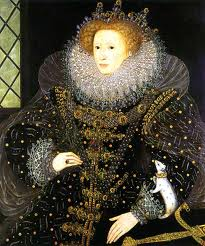The Importance of a Guinea Pig
A few weeks ago, I posted a gorgeous picture of Ufton Court’s latest additions, our beautiful guinea pigs. They have now been residence in our Tudor farm for nearly 9 weeks and I must say they have definitely made themselves feel at home and part of the family.
They have been a real hit with all the children at Ufton as they learn about how to care and look after animals on the farm whilst learning about the life cycle of animals. Learning about guinea pigs whilst giving them a cuddle at the same time. What could be better?
We know they must be a definite hit as we have a group coming in next week who has asked for them specially to be moved over to the cabins so their students can feel the benefit of our furry friends.
This got me to thinking, were guinea pigs always born and bred to be cute and cuddly friends or were they so much more? The National Portrait Gallery in London have recently revealed a painting, as part of the exhibition “Elizabeth I and Her People”, of three children from the Elizabethan period holding a guinea pig which may be the first portrait of the little creatures. We also know that there is a painting in existence of Elizabeth I herself holding what looks to be a guinea pig, who are also known as an exotic cavies
But how did they get to be in 2 portraits of the aristocratic and wealthy?
The story of the guinea pig starts in Peru, South America, where they were domesticated as early as 500 BCE but they weren’t kept as a pet as the Elizabethan’s kept them. Apart from being a delicacy in South America, guinea pigs held great religious importance for some civilizations including the Moche who worshipped the animals and included them within much of their artwork. Statues have been discovered of the mini rodent on various archaeological sites in Ecuador and Peru which date back to 500 BCE.
Guinea pigs didn’t only have religious importance, they were also considered significant in the traditional healing rituals in Andean medicine. The Andean’s would rub the guinea pig over the body of a sick patient and when it began to squeak, they believed, the guinea pig had identified the affected area. It seems that guinea pigs were considered animal doctors.
It wasn’t until Spanish traders went to South America in the 16th Century, did the guinea pigs begin to be treated as the pets we know and love today. The guinea pigs became the pet of the aristocracy. They were not often bought but rather given as presents especially as wedding gifts or gifts to special guests. They were probably such a special present as the most important person during their time, Queen Elizabeth, kept these cute little creatures (as well as many other pets) therefore making their way into these now famous portraits.
In today’s society, the guinea pig isn’t so much the pet of the elite and the only portrait of them these days is likely to be only on Facebook. However they aren’t any less loved or any less important, especially here at Ufton where they are part of children’s learning.
Written by Vikkie Nuttall



